In January and February of 2013, I drove around the periphery of the southwest corner of Edmonton. Be it driving to work in the area, or visiting friends, the area has drastically changed in the last decade. New neighbourhoods have been created; new schools, grocery stores, recreation facilities, police stations and even lakes have popped up on what was farmland just fifteen years ago. This relationship has always been interesting to look at. New houses are built in what looks like the middle of fields, with only a skeleton of roads and streetlights resembling a neighbourhood at the early stages. I wanted to photograph this relationship. What the land looks like before everyone moves in, how the farmland has been turned into something totally new, and then the neighbourhoods once everyone gets settled in.
The following photographs range in areas from the southernmost part of Windermere, to the eastern edge of the city at Winterburn Road.

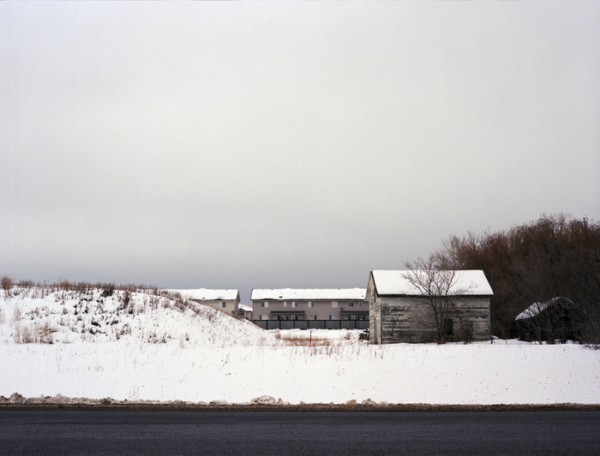
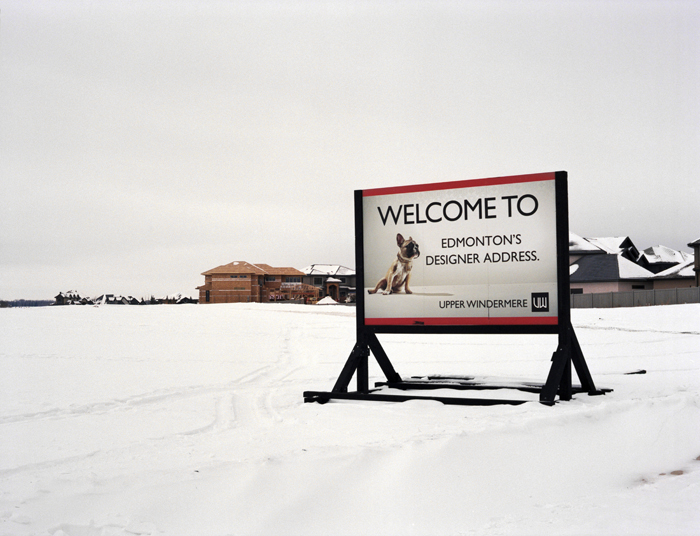
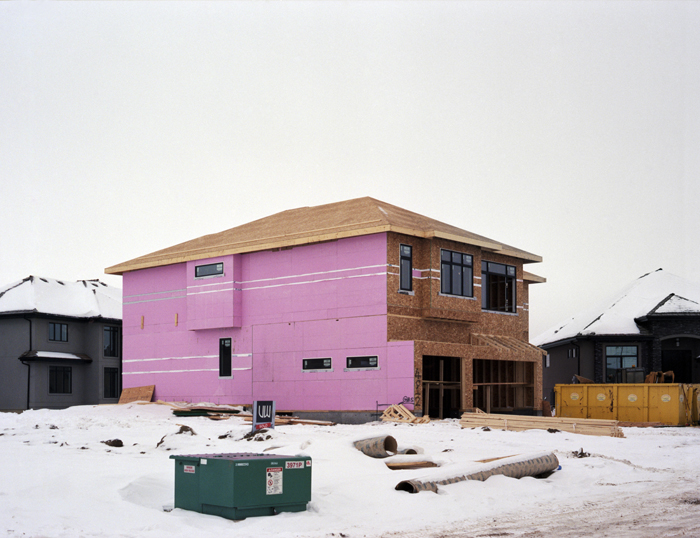
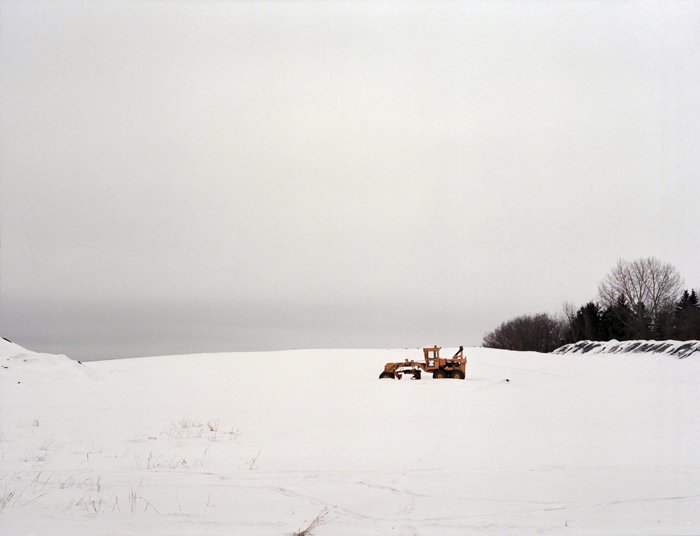
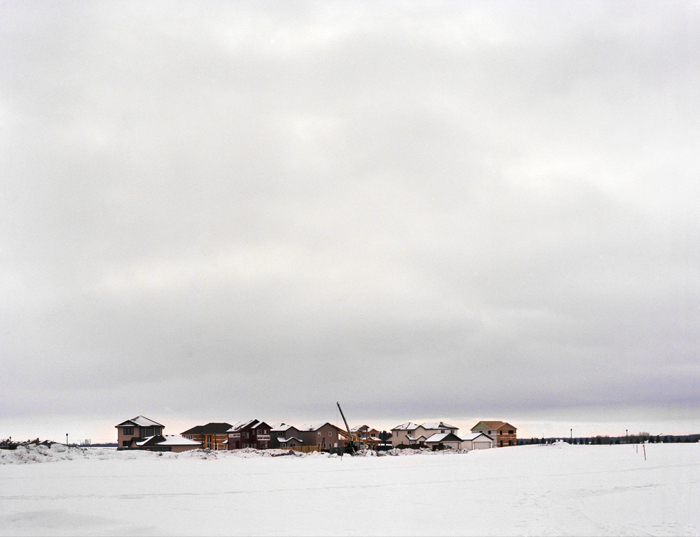
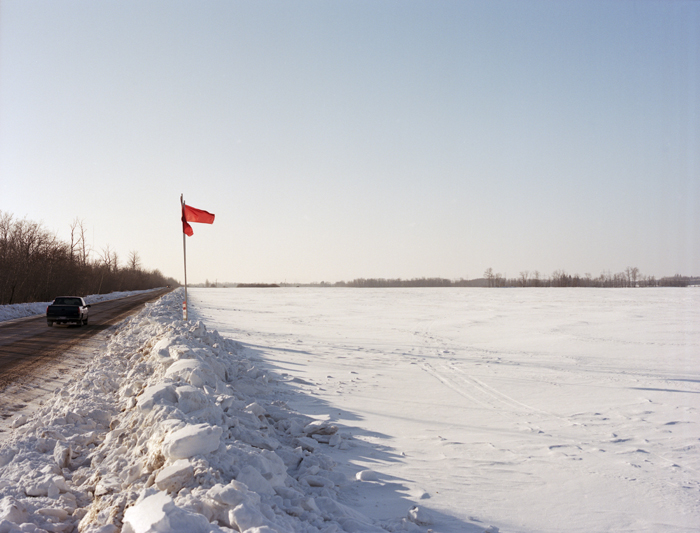
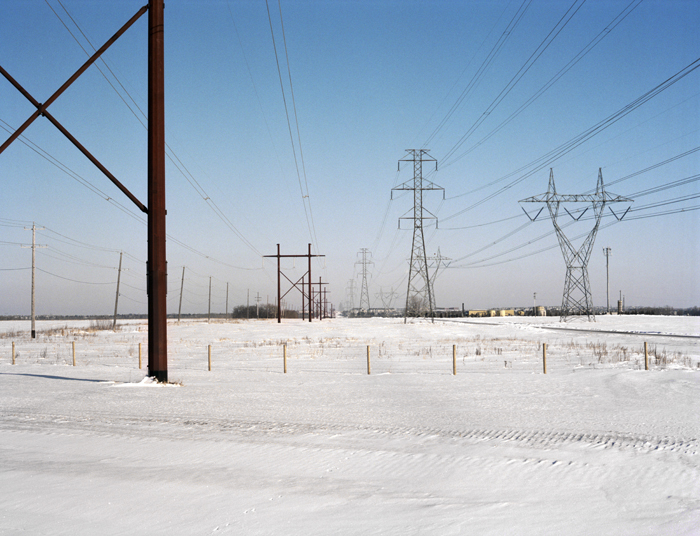
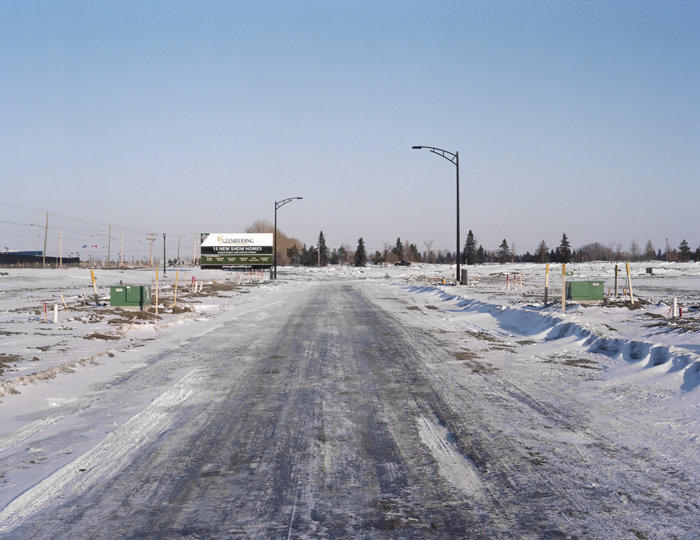

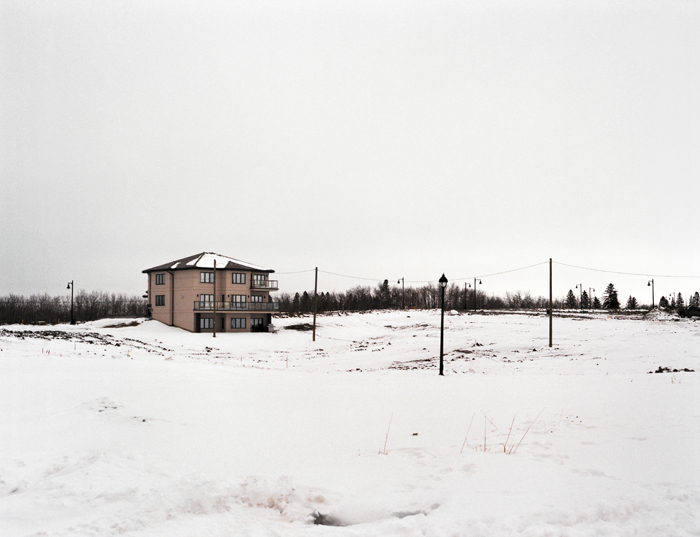
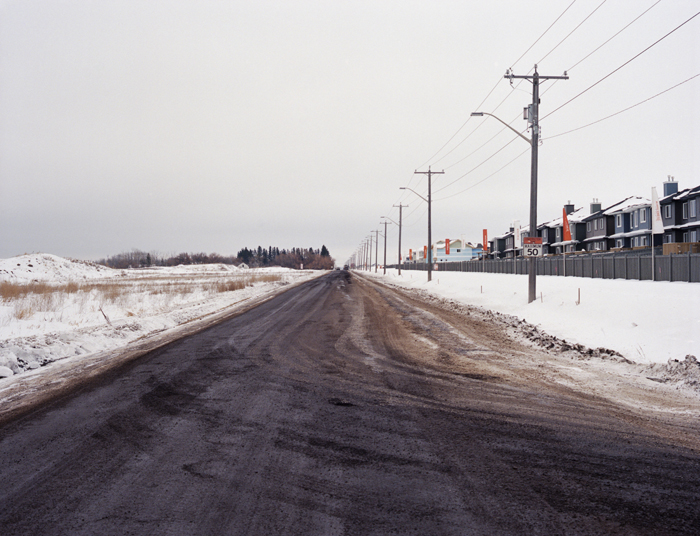
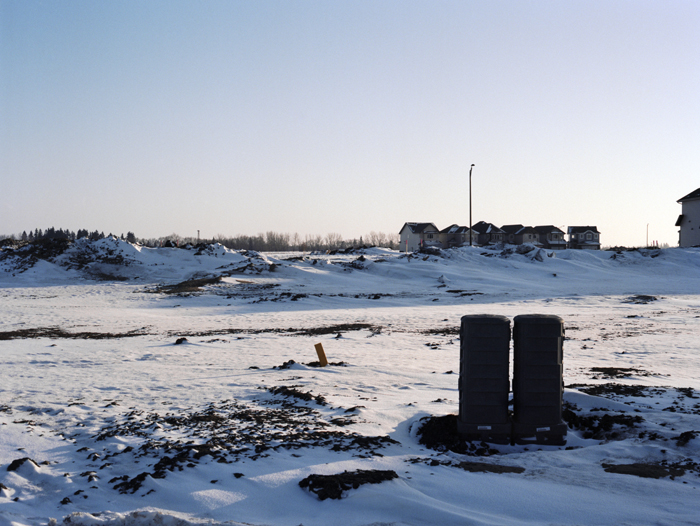
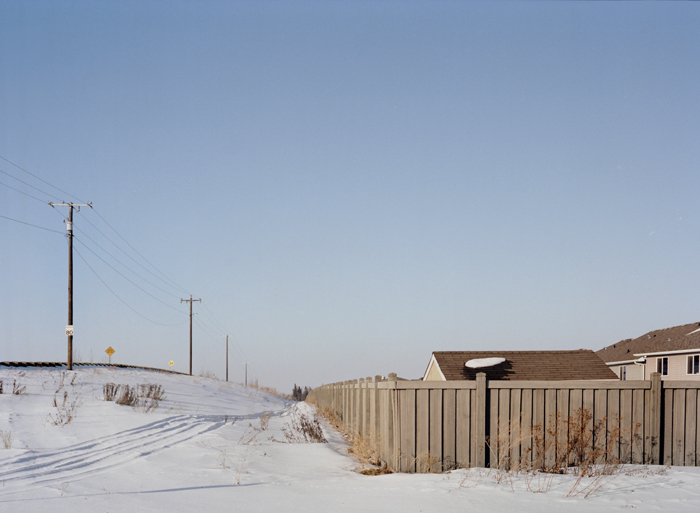
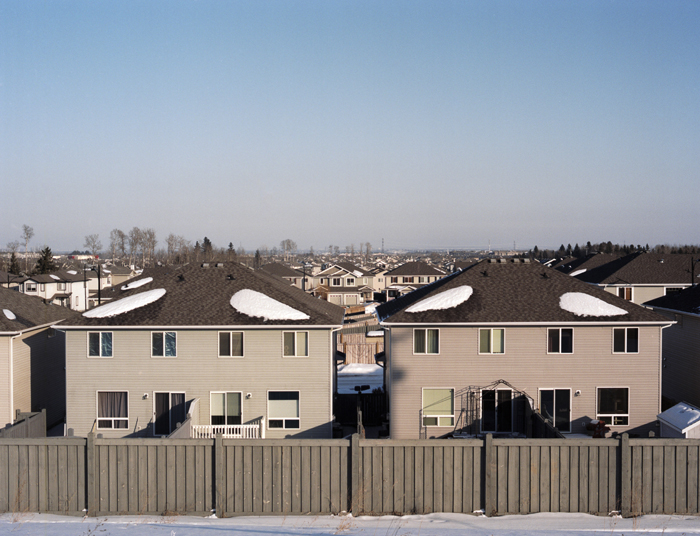
4 comments
In one of those photos, that cluster of houses in the snow look like some kind of countryside hamlet. And then you get that crazy repetition like in the last photo that goes by the name of sprawl.
I grew up in a suburban fringe like this. There’s something unnerving about staring through the gap between houses into an endless expanse of farm and woodland.
Thanks for the photos, they’re all great.
I’d like to point out that I live in a home that is the exact duplicate of the home next to it, and the one next to that, and the one next to that.
They were all built in 1955. In Holyrood. which at the time was the extreme eastern edge of town and also replaced viable farmland.
It would do well to remember that the mature neighbourhoods of the 21st century were the disconcerting sprawl homes of the 1950s. Not that we don’t have a sprawl problem, but cookie cutter homes are not a new phenomenon.
Excellent point and I totally agree. I grew up in Belgravia, surrounded by houses with the identical floor plan and design to my own. It is really interesting to see how neighborhoods can age after they are given time to grow and develop.
It would be interesting to explore the imagery of urban renewal in stark contrast to this series. The expanse of sky in these compositions, as well as the isolated forms convey a mood of loneliness. Wonderful photographs and thought provoking explorations. Such powerful work – brilliant.